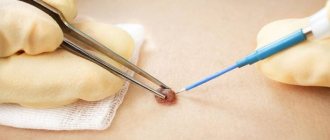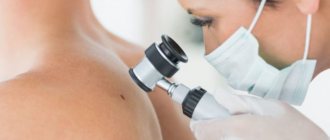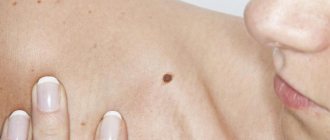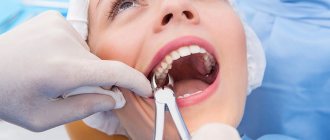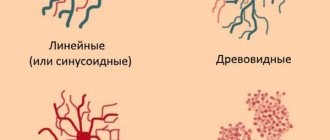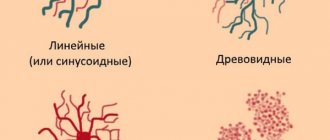Laser rejuvenation is a fairly popular and popular hardware cosmetology procedure, which more and more patients turn to every year.
In laser rejuvenation, a distinction is made between resurfacing and peeling. Laser peeling is essentially a light skincare procedure designed to renew the top layer of skin - the epidermis. Laser resurfacing is loved for its versatility and effectiveness. The resurfacing procedure is designed to renew the skin as much as possible - the effect affects both the epidermis and the dermis.
Some cosmetologists also classify IPL procedures (Intensive Pulse Light, i.e. “intense pulsed light”), but this is not correct: IPL procedures are used to treat skin hyperpigmentation, but are not laser.
People admit that they have been trying various means of eliminating hyperpigmentation for years, spending large sums of money, suffering the consequences of their own mistakes, until they come to the right conclusion:
hardware procedures are sometimes the only rational option for combating age spots and pigmented formations.
To combat pigmentation, professional cosmetologists offer patients either IPL procedures (aka IPL phototherapy) or laser resurfacing, depending on the severity of the problem and the general condition of the skin.
The principle of operation of laser resurfacing of age spots
The laser beam, due to its high temperature, “burns” areas of the skin according to a given pattern (see fractional laser exposure). When resurfacing, the laser penetration depth usually reaches the dermis, which means that all epidermal cells containing excess melanin are also destroyed. In their place, new tissue is formed, with new cells of a natural color.
Recovery after laser resurfacing is quite long - from 7 to 15 days, the skin goes through a recovery cycle, crusts form; During this period, she requires delicate care.
Difference between IPL and laser resurfacing
The principle of operation of laser resurfacing and IPL phototherapy is indeed similar, but still the second method has striking differences. Pulsed light (this is a light beam, not a laser beam) affects only melanin and does not affect skin that has a normal color. Melanin-containing cells are also destroyed, but the surface of the skin remains intact. Coagulated melanin is removed from the skin after 7-15 days, global skin renewal does not occur.
Sometimes IPL phototherapy is more effective than laser resurfacing. Due to the selective effect only on melanin, after the procedure there is only a change in skin color in the treated areas, small uniform peeling, which goes away on its own during the process of washing the face.
Laser procedures solve the issue of global skin rejuvenation; IPL therapy is indicated if it is necessary to remove only pigment.
Speaking about priorities, it should be emphasized that laser resurfacing is more relevant in case of other age-related problems, in particular fine wrinkles, scars, and sagging skin.
Using laser resurfacing you can remove:
- Lentigo;
- Melasma;
- “Sun” pigment spots;
- Post-traumatic hyperpigmentation and pigmented scars;
- Stagnant post-acne spots;
- "Senile" hyperpigmentation.
A prerequisite for fixing and prolonging the result is following the doctor’s recommendations during the rehabilitation period.
Cost of laser resurfacing and IPL therapy
Since laser resurfacing is a more “serious” procedure that rejuvenates the skin at almost all levels - turgor, color, elasticity improves, wrinkles, spots, scars disappear, a face lifting effect is achieved - the cost of resurfacing is much higher than the cost of photorejuvenation.
If removing pigment on the face using IPL costs from 9,000 rubles, then the cost of laser facial resurfacing starts from 35,000 rubles. Therefore, if your goal is to remove excess pigmentation and even out your complexion, then you should consider IPL photorejuvenation.
Separately, we note that there are offers of laser resurfacing for less money - this is most likely a scam and instead of resurfacing, you will be given a simple laser peeling.
How to make the procedure effective and safe
Experts practicing laser therapy do not always recommend the necessary preparation of the skin for 2 reasons:
- Immediately after the procedure there are no undesirable effects / not visible
- Fear of scaring off the client, who may not return a month after skin preparation
If you have a firm goal of getting lightening/getting rid of spots on your face, you need to carry out specialized skin preparation for 1 month.
Preparing the skin for laser therapy includes:
I. Use of brightening agents
Recommended scheme for using lightening agents*:
- Lightening serum "SkinBright" - suppresses the activity of excited melanocytes, use on the entire face 2 times a day.
- Retinol serum "Brighting" contains Retinol 2% and brightening complexes - use locally on spots.
- Antioxidant mask “C-Infusion” with Vitamin C - actively removes pigment and rejuvenates the skin.
- CBD Blue Light moisturizing cream with Cannabidiol and Blue Light filters with protection against radiation from electronic gadgets (evening)
Important! Do not use products containing hydroquinone , because it leads to the death of melanocytes and irreversible depigmentation, and therefore the use of this substance is currently prohibited in a number of countries.
II. Daily use of sunscreen
Mineral cream SPF 30 with zinc and protection against infrared and blue light. To exclude provocation of the production of melanocyte-stimulating hormone.
*all links to drugs are clickable, click for more detailed information.
Removal of pigmentation with AcuPulse laser
Levon Chakhoyan’s clinic is equipped with new equipment of the latest generation - the AcuPulse laser unit.
AcuPulse is a new carbon dioxide laser from Lumenis with built-in SuperPulse™ technology, providing precision pigment spot removal procedures. This protects neighboring and deep tissues from injury, which means it facilitates the recovery period.
Telephone consultation is always free!
Leave your contact, we will tell you everything and offer a discount!
Send
Thank you!
Information has been sent to the clinic administrators!
Hot and cold lasers
Lasers that solve a cosmetic problem by heating are called “hot”. Previously, in the aesthetic laser equipment market, all lasers were like this. But in recent years, models of “cold” laser devices have appeared. The brightest and most interesting representative of this variety is the picosecond alexandrite laser Picosure from the American manufacturer of premium equipment Cynosure.
On the one hand, the Picosure laser is similar to other alexandrite lasers - it emits pulses in the same way that transmit energy to target cells, destroying them. The main difference is in the amount of energy transferred and the duration of the pulse: enormous power is transmitted in such a short time that it has a photomechanical effect rather than a photothermal one.
It turns out that Picosure does not heat the melanin cells, it simply smashes them into dust with a powerful energy “push” - and so quickly that the surrounding cells do not feel any impact.
This technology is the most gentle way to solve the problem of pigmentation today.
Rehabilitation period after laser removal of hyperpigmentation
Laser resurfacing of age spots does not require special preparation from the patient. It is advisable to undergo the procedure in cold and cloudy seasons, refraining from visiting the solarium at least a month before it.
The course of procedures is calculated by the doctor based on the etiology of age spots, their age and color, location, size, as well as the general condition of the patient’s skin. “Standard” pigment spots can be removed in one session. For diffuse or intense hyperpigmentation, a cycle of 3-5 sessions is required, spaced 3-4 weeks apart.
In the first 3-5 days after laser resurfacing, you should take care of your skin and use cosmetics recommended by your doctor. It is allowed to use pharmaceutical creams and ointments that activate the regeneration process (for example, Bepanten or Bepanten+). It is advisable to wash your face with warm water and a soft cleansing gel or foam. Irritating influences in the form of scrubs, ice, etc. should be excluded.
It is strictly forbidden to tear off the crust with your hands.
From the first day after the procedure until the next session (if provided) or for 3-4 weeks, it is mandatory to use “sanblocks” - caring or decorative cosmetics with a high sun protection factor (minimum SPF - 70-80). This recommendation is relevant for everyone - even those who believe that they are not exposed to the sun because they are constantly in the office and get to it by car. During the autumn-winter seasons, the use of creams with SPF is also mandatory.
During recovery, avoid:
- Natural and artificial insolation;
- Mechanical and chemical peelings;
- Facial massage;
- Visiting a bathhouse or sauna;
- Swimming in ponds (in the early stages of healing).
You should consult a cosmetologist about any changes to your usual skin care routine!
Reasons for the formation of pigmentation
Melanin pigment is synthesized by melanocyte cells, and keratinocyte cells deliver it to the surface of the skin.
At the same time, the main trigger for the appearance of pigmentation is the sun. When we don't properly protect our skin, the cells produce much more melanin than necessary, causing it to accumulate unevenly under the skin.
Very often, pigmentation is associated with the following factors:
- Iron deficiency. When the body lacks iron, hemoglobin production is reduced, and as a result, the blood is less able to deliver oxygen to the skin. Because of this, the restoration processes in cells are disrupted, and they are not as effective in resisting aggressive environmental factors.
- Excessive exposure to sunlight. Under the influence of ultraviolet light, melanocytes begin to produce excessive melanin. They accumulate and then spread unevenly under the skin, forming spots.
- Hormonal disbalance. The skin is a hormone-dependent organ. And the work of melanocytes is strongly influenced by estrogen, progesterone and pituitary hormones (thyroid-stimulating, somatotropic, adrenocorticotropic). If these indicators are not normal, then under the influence of ultraviolet radiation they trigger a cascade reaction leading to the appearance of age spots. Very often, hormonal fluctuations occur during pregnancy, lactation or taking oral contraceptives.
- Skin trauma. Some cosmetic procedures violate the integrity of the skin and cause severe irritation. Sometimes this becomes a trigger for the appearance of age spots.
- Problem skin. Often, excessive appearance of inflammatory foci (for example, acne) leads to pigmentation.
- Age. With age, the skin and its protective mechanisms become thinner, which means that it is much easier for the sun's rays to exert their negative influence.
— Malfunctions of the kidneys, liver, endocrine system. Improper functioning of these organs interferes with the metabolic processes in the body, resulting in dark spots.
- Cosmetics. Photosensitizers contained in some products increase skin sensitivity to ultraviolet radiation, causing so-called solar lentigines.
Contraindications to laser therapy for age spots
There are a number of contraindications for laser pigment spot removal. Most of them are relative.
Contraindications include:
- Oncological diseases;
- Severe systemic pathologies in decompensated forms;
- Neuropsychiatric disorders;
- Epilepsy;
- Systematic intake of specific drugs (hormones, photosensitizers, etc.);
- Acute inflammatory and infectious processes in the affected area;
- Severe heart, kidney or liver failure;
- Fresh tan.
The decision on the choice of tactics to combat age spots should be left to the doctor. A cosmetologist will examine your skin and diagnose it before prescribing you a particular procedure. Choose your doctor responsibly and rely on his knowledge. You will definitely get the results you deserve!
The principle of laser action on pigment spots
You may know how a laser “works” during hair removal - its radiation is literally “absorbed” by the hair shaft, causing it to instantly burn out and the hair follicle to die. The laser pulse in this case uses the pigment melanin, which is abundant in hair and follicle cells, as a target.
If a laser configured for hair removal is directed at the skin, the skin will get burned and a lighter spot may subsequently remain on it. The radiation from such a laser is too powerful and it is enough not only to heat and destroy melanin, but also to spread to surrounding cells, overheating them too.
But if you choose the right settings - the energy of the pulse, its duration and the frequency of emission of laser flashes, then you can transfer just enough energy to the skin so that it concentrates on the pigment, destroys it, without being transmitted to “healthy” cells and without damaging them.
Possible complications
Laser pigmentation removal is a gentle procedure and therefore practically does not cause complications. If a good clinic was chosen, a practicing experienced cosmetologist with good customer reviews, and the procedure was carried out according to all the rules and regulations, there should be no side effects. If you set the wrong wavelength or use the wrong attachment, a minor burn may occur. Complications include slight redness of the skin and signs of peeling. But that's all normal. They disappear during the rehabilitation period. If, 7-10 days after the procedure, redness and swelling do not disappear, a rash appears, the temperature rises, and the lymph nodes become enlarged, you should consult a doctor.
Expected effect and duration
To treat pigmentation, you need high-quality diagnostics and a set of measures that suits you. Pigment spots are at different levels of depth, so it is important to choose the appropriate procedures correctly. And the sooner you contact a specialist, the easier it will be to get rid of the problem.
The listed cosmetic measures are universal and have a long-lasting effect. They will give the skin radiance, eliminate pigmentation and wrinkles, prevent the appearance of new spots, and restore firmness and elasticity.
But it should be remembered that pigmentation can not only appear on its own (due to age and exposure to sunlight), but also be a symptom of a disease. Therefore, in the second case, it is important to eliminate the root cause of the stains.
The duration of action for all cosmetic procedures is different: with hardware and injection techniques, the effect will last up to a year, and after thread lifting you can count on several years without insidious spots.
How are procedures performed at Expert Clinics?
Before prescribing any treatment option for pigmentation, the Expert Clinics in Moscow first carries out a skin diagnosis: the cause of the spots, their size, depth, as well as the individual characteristics of the patient are determined.
After this, the optimal technique is selected, because the main principle of our clinic is an individual approach. Next, the doctor will tell you in detail about the procedure, contraindications and possible side effects. And after the session he will give recommendations that will help prolong and maintain the effect.
All procedures in our clinic are performed by cosmetologists with many years of experience and knowledge in the field of anti-aging medicine.
